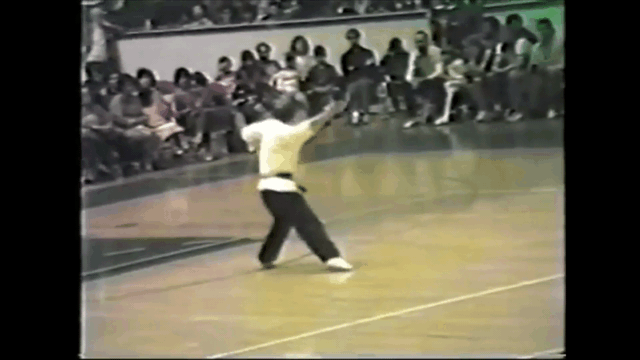drop bear
Sr. Grandmaster
This is why I was trying to teach them to hit using their body. The basic movement in Jow Ga is shuffle movement and not step. Each shuffle is throwing the body weight forward or backwards. So that movement can be used to power punches from some unexpected positions. If the clip below, if he would shuffle forward then he wouldn't lose the power that you speak of.

This is more like our big wheel punches where the power flows in the same direction.

At 1:05 he misses the parry and almost runs into my fist because he's trying to parry across his body instead of using a parry that is more forward at 45 degree angle. His parry is trying to address the punch and not the mechanics of the punch. You have to play it in slow motion to see it. The best way I can describe it, is that if you and I are sparring. I don't want to parry your fist because it's too quick. The time to parry the fist is a very small window and by the time you react, you'll be "swatting at flies"
This is what I consider parrying the fist.
I want to parry closer to your elbow where the mechanics of your punch exist. This increased the time that I have to actually parry, because now I'm not watching for movement in the fist, I'm watching for movement in the mechanics of the punch at the elbow. The 45 degree parry puts all of your elbow movement within my range so I only need a slight adjustment to keep up with the movement of the elbow. If I parry your punch, then you can feint your punch and my parry will fall on emptiness. If I target the mechanics of that punch then feinting won't prevent me from pinning your arm because my parry is moving forward and not across my body. (Not sure if I'm describing a clear visual here)
There's a ton of things that this type of parry cancels out which makes it difficult for the opponent to throw that rear hand. It's also a more aggressive parry than what most people use. In the video you can hear me say that the parry is like punching with my palm
This particular technique requires a type of structure which is tricky for beginners. As DB and Danny noted, the students are operating from a bladed structure and rotating in the direction of their parry, which totally kills the body connection and structure necessary to transmit power for the punch. If you were doing a parry followed by a punch, then it wouldn't be a problem because they could rotate back for the punch, fixing their structure and adding power. Alternately, they could just rotate into the punch to begin with, relying on head movement and a minimal parry for protection. \
What you're doing instead is operating from more of a square stance with a solid, somewhat forward projecting parry and a simultaneous punch that is largely dependent on the forward body motion for power This only works effectively if you have a good handle on body connection and structure. Otherwise either the parry, the punch, or both will leak power and not produce the desired results. I'd spend more time with the students making sure they could feel the structure necessary to transmit lines of force through the body with individual punches and blocks before trying to teach that particular method of simultaneous defense and attack.
You could of course also throw a hooking style strike to the body. Which means you could rotate the punching shoulder backwards. And stay bladed.
And block with as much force as you want.
But the strike would be one and a half beats. Rather than one.

